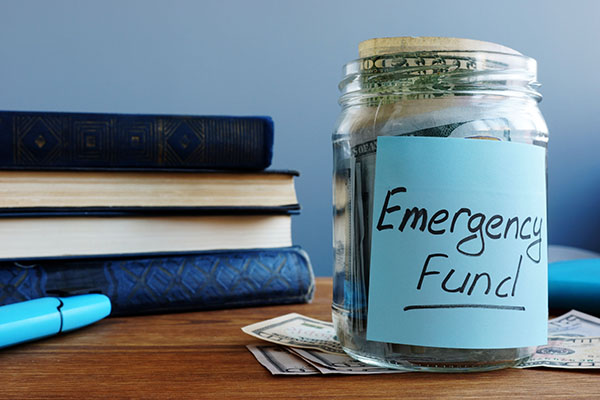
July 12, 2023
By: Justin Mason, CFP®
Life is full of surprises, and not all of them are good. Loss of a job, unexpected bills, or medical expenses are just a few of the unanticipated financial challenges that can throw you off track if you’re not ready for them.
Sadly, many Americans are ill-prepared to take on an emergency. Only four out of 10 U.S. households reported being able to cover an unexpected $1,000 expense, such as a medical bill or a car repair. Moreover, the Federal Reserve says that 36% of Americans don’t have enough cash available to cover a $400 emergency.
If you, like most of us, could stand to be more prepared, read on for reasons why having an emergency fund is so important and tips for building up your emergency savings.
Why are Emergency Savings Important?
Unanticipated expenses have the potential to have a lasting effect on your financial security. It isn’t just the initial bill that can cause you trouble. Surprise expenses coupled with a lack of a safety net can lead to poor decision-making that will compound the problem down the road.
Without available savings, individuals may find themselves taking funds from places they normally wouldn’t like a retirement account, incurring penalties and leaving them with a depleted nest egg, or a credit card, creating debt and accruing interest. Emergency savings are a tool that provides flexibility for managing those surprise expenses with minimal disruption to your other financial goals.
Finally, the stress and anxiety of not having a financial safety net can weigh heavily on our minds. 58% of American adults surveyed said they are uneasy with their level of emergency savings, and three-quarters have not seen an increase in their emergency savings over the past year. This means that even before a crisis occurs, you may feel the negative effects of being unprepared.
How Much Emergency Savings Should I Have?
Your goal for emergency savings varies depending on factors such as your household size and cash flow needs. But generally, you should determine your monthly non-discretionary expenses and aim to save between 3- and 24-months’ worth of cushion. Remember, the more you save, the longer you can sustain your household until you find income again.
Refer to the chart below to help determine your ideal savings goal. Once you establish your savings target, open a dedicated account for your emergency fund, reevaluate your discretionary spending, and make regular contributions to your emergency account until you build your ideal safety net.
Where Should I Keep My Emergency Savings?
When choosing what type of account to use for your emergency fund, consider the following:
- Investment factors: You don’t want to take risks with these funds, or they may not be there when you need them. Keep your emergency savings in an account that prioritizes stability, not growth.
- Accessibility factors: Emergencies rarely RSVP, so you want your money in a place where it is available on short notice. Keep at least a portion of your savings liquid so that you are able to access it when you need it.
Examples of the best types of accounts for emergency savings can be found in the chart below.
Conclusion
When it comes to the future, we all hope for the best, but to weather life’s inevitable challenges, we must also plan for the worst. Emergency savings are vital to help keep you on track toward achieving your financial goals. For questions about how to save for the unexpected, please contact your KEB Wealth Advisors.
Sources:


